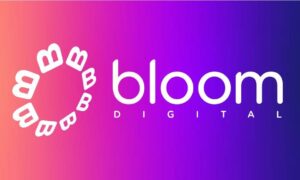For decades, physical mail reigned supreme for sending contracts, invoices, statements, and sensitive communications. Businesses relied on paper, envelopes, stamps, and postal services—a process fraught with delays, mounting costs, and environmental concerns. Letters could take days or weeks to arrive, get lost in transit, or require costly tracking solutions. Signatures needed in-person meetings or cumbersome back-and-forth exchanges. This inefficiency created bottlenecks, frustrated customers, and drained resources. Yet the necessity of secure, verifiable document exchange remained constant, driving demand for a better solution.
The Digital Revolution Takes Hold
The advent of robust online document sharing platforms marked a turning point. Leveraging cloud technology and ubiquitous internet access, these services enable instantaneous transmission of files—from PDFs and spreadsheets to legally binding contracts—anywhere in the world. Platforms allow users to upload, organize, and share documents via secure links, eliminating physical handling entirely. This shift transcends mere convenience; it fundamentally reshapes workflows. Real-time collaboration replaces sequential mailing, edits occur synchronously, and version control confusion vanishes. The friction of distance dissolves, enabling global teams to operate as if co-located. Crucially, this revolution isn’t just speed; it’s about creating dynamic, interconnected digital workspaces where information flows seamlessly. Businesses can now mail documents online with the same formality as traditional post but with unprecedented efficiency and traceability.
Unlocking Tangible Business Advantages
The move to online document sharing delivers measurable benefits across operations. Cost savings are immediate and substantial—businesses slash expenses on paper, printing, postage, and physical storage. Operational speed accelerates dramatically; approvals that took weeks via snail mail happen in hours or minutes. Enhanced productivity follows, as employees spend less time on manual tasks like stuffing envelopes or visiting post offices and more on value-added work. Improved customer experience becomes achievable; clients receive critical documents instantly and can interact with them (e.g., e-signing contracts) without delay, boosting satisfaction and loyalty. Accuracy and Accessibility also improve; digital documents are easily searchable and retrievable from any device, reducing errors and lost files. Finally, audit trails inherent in digital platforms provide transparent records of who accessed, edited, or signed a document and when, strengthening compliance and accountability.
Fortifying Security in a Connected World
Security is paramount when replacing physical delivery. Leading online platforms prioritize this through enterprise-grade encryption, safeguarding data both in transit and at rest. Multi-factor authentication (MFA) adds critical layers of access control, ensuring only authorized individuals view sensitive materials. Granular permission settings allow senders to precisely control actions—view only, comment, edit, download, or sign—minimizing exposure. Detailed activity logs offer complete visibility into document interactions, crucial for compliance with regulations like GDPR, HIPAA, or financial industry standards. Furthermore, digital solutions enhance disaster recovery; documents stored securely in the cloud are immune to physical disasters like fires or floods that could destroy paper records. This robust security framework often surpasses the vulnerabilities inherent in unsecured mailboxes or misdelivered physical packages.
The Imperative for Sustainability
The environmental argument for digital document sharing is compelling. Traditional mailing relies on paper production (a major driver of deforestation and water consumption), energy-intensive printing, and fossil fuel-powered transportation. Online sharing drastically reduces this footprint. By eliminating paper, businesses conserve trees and reduce landfill waste. Cutting out physical transport slashes carbon emissions associated with delivery trucks and airplanes. Even reducing internal printing and storage needs lowers energy use within offices. As corporate social responsibility and environmental, social, and governance (ESG) goals gain prominence, transitioning from physical mail to digital alternatives becomes a strategic imperative, demonstrating a tangible commitment to sustainability while improving the bottom line.
The Integrated Future of Communication
The trajectory points towards deeper integration and intelligence. Online document sharing is converging with broader digital ecosystems—seamlessly connecting with Customer Relationship Management (CRM), Enterprise Resource Planning (ERP), and accounting software for fully automated workflows. Artificial Intelligence (AI) is poised to revolutionize the space further, potentially auto-classifying documents, suggesting recipients, extracting key data, flagging anomalies, or even drafting preliminary responses. Blockchain technology offers new frontiers for immutable verification and smart contracts. While physical mail won’t vanish entirely for specific use cases, its role will continue to diminish. The future belongs to intelligent, secure, and sustainable digital platforms that don’t just transmit documents but actively enhance collaboration, ensure compliance, drive efficiency, and unlock new possibilities for global business communication.



































